Many were disappointed to see the newest iteration of the Ducati Monster get liquid cooling and even more Transformers-like styling. After a few weeks on it, I think it's their best yet.
The Ducati Monster initially was Ducati's answer to the cruiser market. The idea was to create something that kept Ducati's heritage, but was easy to ride and modify so Ducati could steal some of Harley's Sportster crowd.

The first Monsters were all parts-bin bikes to help keep the cost, and therefore price, down. The M900 came first, in 1993, and was followed by the M600 in 1994 and the M750 in 1996. The M900 used the engine and part of the frame of the 900 Supersport mated to the fork of the 750 Supersport. The only thing designed specifically for the bike was the tank, and its muscular styling was paired with minimalist body work to achieve a visual language of strength, like a bull about to charge.
The 1990s Monsters looked a lot like mid-2000 Suzuki SV650s and went largely unchanged until 2000, when the M900 was upgraded with fuel injection. Then, in 2001, came the S4, which brought the first liquid-cooled, four-valve superbike engine to the line. With 2005 came the S2R 800 and 1000, both of which used a two-valve desmodromic engine.

Until this newest refresh, the most recent iteration came about in 2007 with the air-cooled Monster 696 and 1100, which were then followed by the 796. This iteration marked the beginning of a divide amongst Monster fans. Those who considered themselves true Ducatisti felt the new headlight, cast subframe, and wet clutch were too much of a departure from the bike they'd come to know and love. Despite being a miss for Ducati fans, the bikes were a massive hit globally, and the M696 become the first Ducati to sell over 10,000 units in one year.

In 2014, things were turned on their head once again. The headlight and frame got weirder, the wet clutch stayed and, to make matters worse, the engine was now liquid-cooled. So much for Ducati's simple, air-cooled sporty cruiser, huh? Times a changin' 'round these parts.
The bike
The 2015 Ducati Monster 821 is powered by the same second-generation 821 cc Testastretta 11-degree engine found in the Ducati Hypermotard. It makes a reported 112 horsepower at 9,250 rpm and 65.9 foot-pounds of torque at 7,750 rpm. Like the Panigale, the motor acts as a stressed member of the chassis and is attached directly to the trellis frame.
The Monster comes with three riding modes: Sport, Touring, and Urban. Touring and sport both provide the full weight of the 112-horsepower motor, with sport offering quicker throttle response to help you access that power with a little less flick of the wrist. Urban limits power to 75 ponies and decreases throttle response, which I found to be perfect for both wet conditions and maneuvering through dense city traffic.
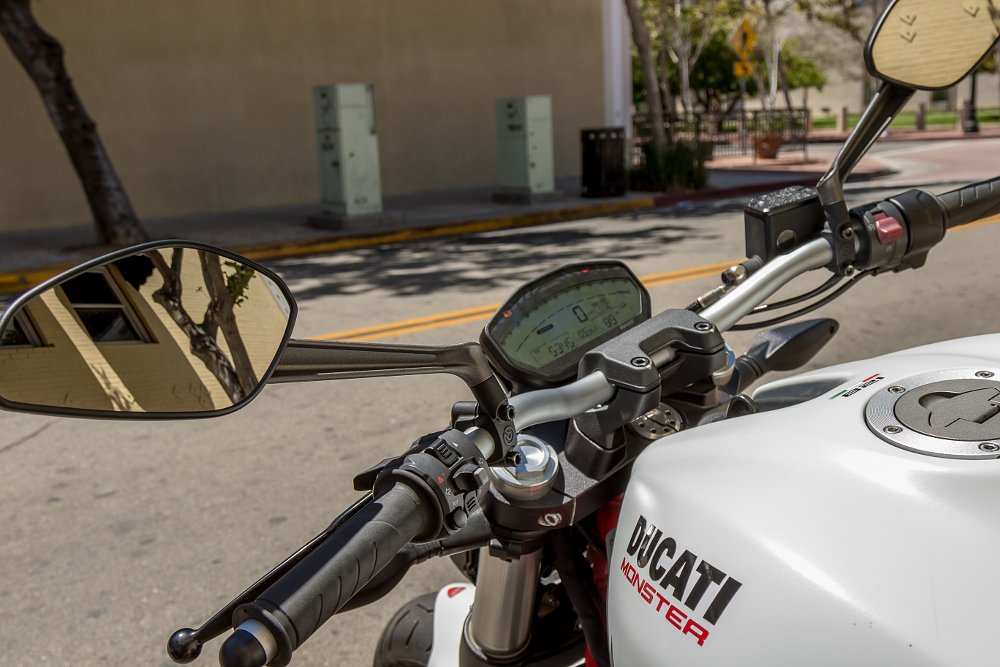
The little Monster also gets Ducati's Safety Pack (DSP), which brings three-level ABS and eight-level Ducati Traction Control (DTC). Both can be adjusted through the onboard menu system. The different riding modes also come with different presets for both ABS and DTC, which can also be adjusted.
Power is managed through a cable-operated APTC clutch with a slipper function, which provides a very light clutch feel and minimizes rear-wheel shudder or chirping on downshifts.

Ducati adjusted the new Monster's ergonomics, giving it a 30 mm longer wheelbase and moving the bars 40 mm higher and 40 mm closer to the rider. Overall, the bike feels slightly more stable and the riding position feels far more like an upright, naked bike than the previous iteration, which felt more cafe racer in nature.
The new, 4.6-gallon fuel tank is now steel, replacing the previous plastic tank, with swappable plastic tank covers. This change is most likely due to many people having issues with the plastic tanks expanding on hot days. This latest tank is the styling cue that feels like the largest departure from the Monsters of old. The shape is designed more for function and how it fits the rider than form.
The Monster 821 uses an inverted 43 mm Kayaba fork in the front and a single Sachs shock at the rear. The front isn't adjustable, but the rear is adjustable for spring preload and rebound damping.
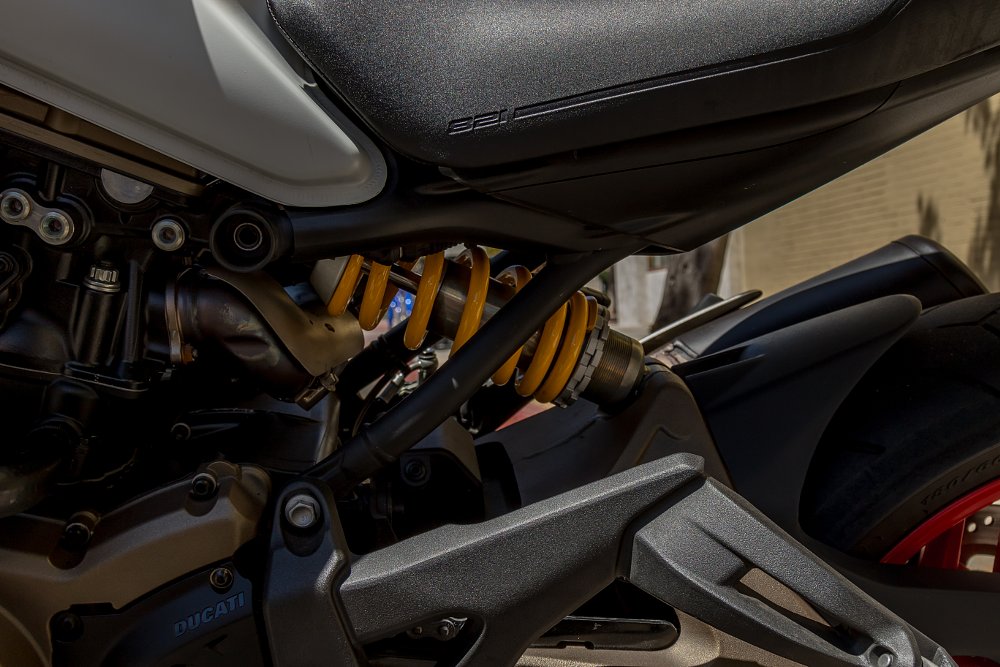
Front braking is handled by twin, radially mounted Brembo, four-piston Monobloc calipers grabbing dual 320 mm discs. The rear single 245 mm disc is mated to a single Brembo caliper. The 10-spoke aluminum wheels come wrapped in Pirelli Diablo Rosso II tires.
The Monster 821 gets a reported 45 mpg, comes in at a hefty 453 pounds wet, and retails for $11,495.
Testing the Monster 821
I was very curious to see what the new Monster 821 is all about. I owned the M696 Dark and currently spend a good deal of time on a friend's tricolor M796, and I'm sad to admit I have a love-hate relationship with both. Both Monsters are two of the prettiest and best sounding bikes I've seen or heard, but both are pretty miserable to ride and have given me nothing but problems. Both have fueling issues, both have poor brake feel, and both are rough on your manly bits (though the M696 is worse).
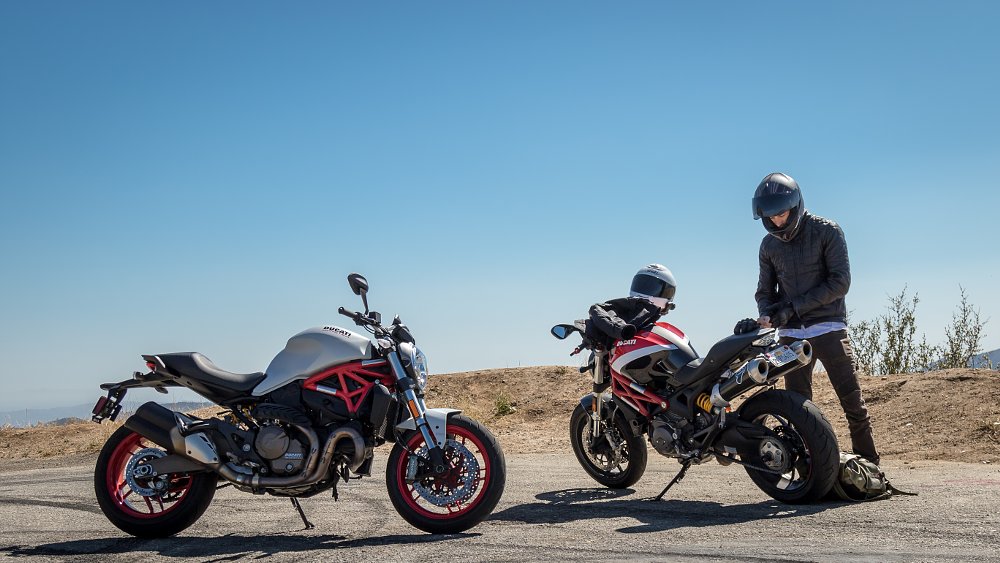
More importantly, neither bike handles exceptionally well. They feel slightly unstable when cornering at speed and, to me, always feel like the front wants to snap in on the direction you're turning. The low bar position also makes turning the bars from lock to lock in traffic situations difficult, and that's before you factor in the wrist pain they cause.
Needless to say, I was surprised about the hype around the newest Monsters upon their launch and pretty skeptical about how I would like them, given Ducati's further departure from the aesthetics I'd come to love.
Cut to mile four of my first ride on the new Monster 821, and all of my fears about the bike or thoughts about the aesthetics are pushed from my mind. The M821 is something entirely new and entirely different, and all of it for the better... at least in the riding experience.
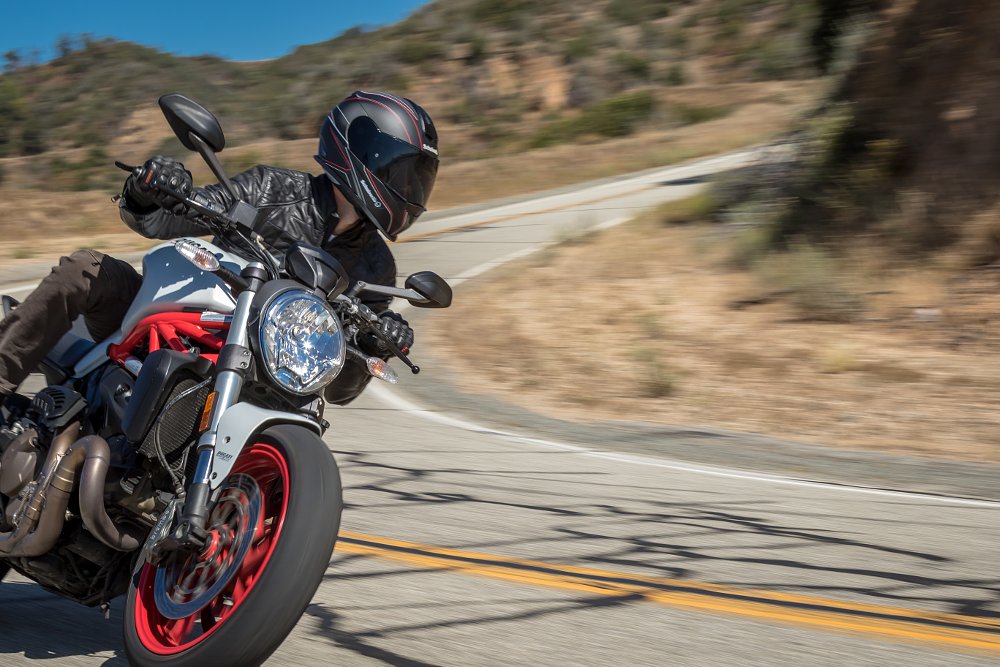
Around town, the Monster feels nearly as small and light as the 796 it replaces. The 821's frame is three pounds lighter than that of the 796, and the center of gravity is forward 24 mm and down 18 mm. Overall, the new bike is 39 pounds heavier, which is largely due to the larger gas tank and heavier motor. Riding the 821 and 796 back to back, it's incredible how much more refined this new package is. On-off throttle was always a little sticky on the previous bike, but dropping the new bike into first gear and pulling away from a light doesn't call for a second thought. The new riding position helps keep your weight off the bars and in your lower back and core, making slow-speed maneuvering a cinch. If it weren't for the throaty engine note and shift lever that likes to be kicked rather than gently guided, I could almost forget I was riding a Ducati.
On the freeway, that more upright riding position actually doesn't translate into too much wind buffeting. The six-speed gear box keeps the motor chugging along at low revs, even up into the 80 mph range, and the Monster's softer suspension ate up the atrocious Southern California freeway system with almost ADV-like gusto.
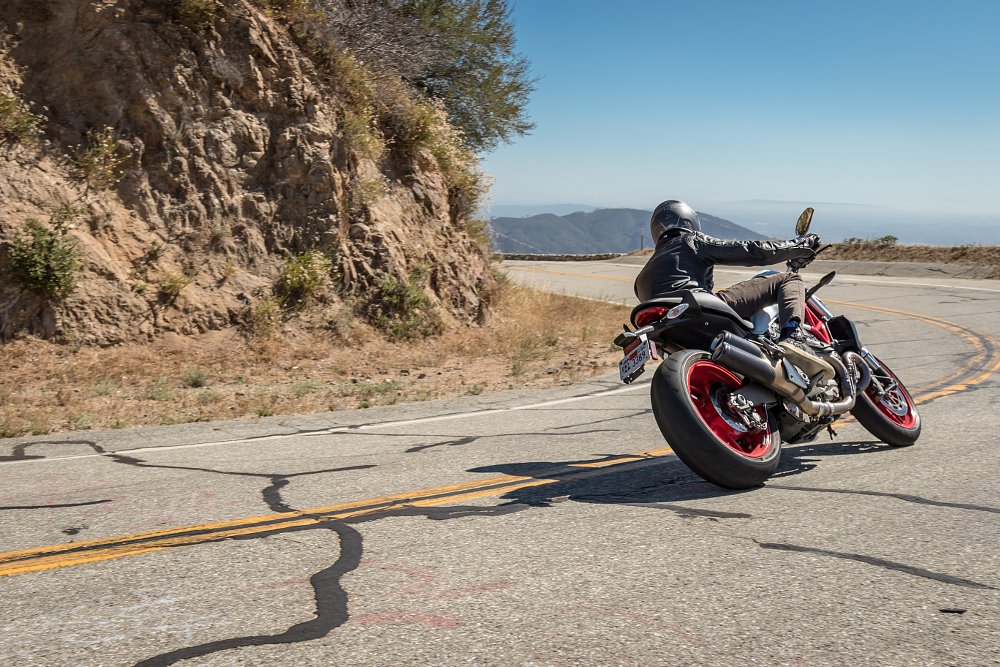
That non-adjustable, semi-soft suspension actually does a decent job in spirited riding until you really start to push it. At my meager 160 pounds (in full gear), the Monster doesn't feel terribly undersprung, but the rebound caused me to bounce off road imperfections with slightly less grace than I'd hope for. However, this isn't to be confused with the pogo-stick-like characteristics of some of the nakeds we've reviewed recently, like the Yamaha FZ-09 or Suzuki GSX-S750. The Monster gave me none of the confidence-zapping bounciness of those bikes. It just didn't feel as glued to the road or capable of eating up road blemishes like the Triumph Street Triple, or Ohlins-fitted Ducati Monster 1200.
Near the end of the loan, I gathered several of the usual suspects for a ride to Ojai for some burgers. The ride included a solo 50-mile leg to meet the boys in Santa Monica, 50 miles of Malibu twisty goodness, another 40 miles of freeway, another 50 miles of Ojai twists and turns, followed by a 130-mile freeway trek home. Sissy that I am, this normally is as much an exercise in pain tolerance and perseverance as it is one of riding prowess, but the Monster fit the bill for every leg of the trip and I made it home happy as a clam.
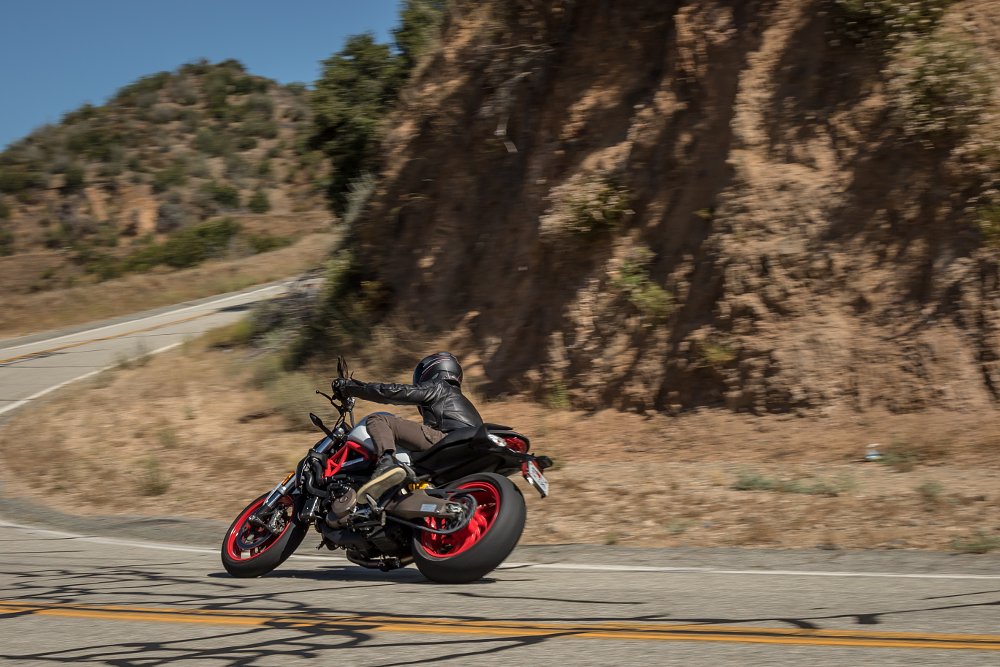
Not only was the bike comfortable (enough) for the long freeway stints, but it was also a perfect fit for the real-world sport riding we were doing. I'd like to take all the credit for finally being faster than my often-featured riding buddy Cody, but even Bucky, who stopped to shoot a pic as we passed and couldn't catch me before the bottom of the hill, mentioned that I seemed to be moving especially well on it (for the record, Bucky is much faster than I am). I can honestly say there are very few bikes I would have rather found in my garage that morning and that's purely to the credit of the team behind this latest iteration.
Monster 821 highlights
There is so much that is good with this bike, it's hard to know where to start.

First of all, this liquid-cooled 821 cc L-twin is quite possibly my favorite motor in all of motorcycling. Cody, my friend from that 150-mile or so trek to my burger spot, works for Honda and rides a nicely upgraded Honda CB1000R. He'd spent some time on the previous iteration of the Monster and always found them underpowered, but after a few miles on the 821, was convinced it was faster than his 1000. In addition to having better low-throttle fueling, the 821 has a little more low-end torque than you'd expect — which really throws you off when the power doesn't drop off above 6,500 rpm, but instead starts to pull harder.
The new, 30 mm longer wheelbase (with the trail increased from 87 mm to 93.2 mm) has done wonders for the handling of the bike. On the 796, the front end feels like it wants to snap in on you mid-turn. Increasing trail normally makes a bike better in a straight line and worse at cornering, but in the case of the 821, it acts as somewhat of a steering damper and mellows out the twitchy handling of the previous iteration. This provides a massive boost in corner feel and corner confidence which, in real riding conditions, actually improves the cornering.
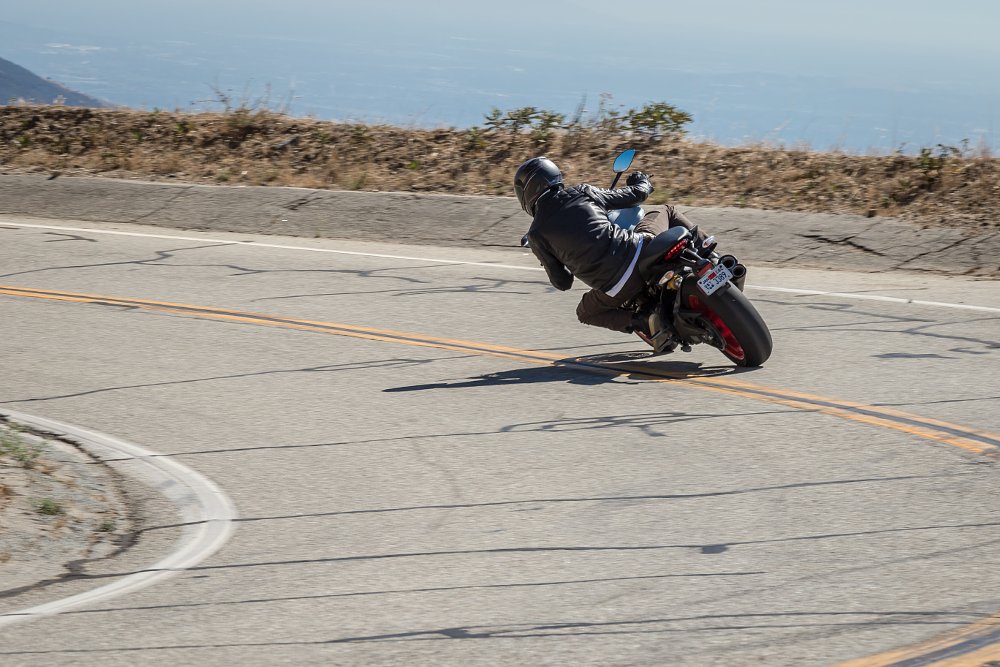
The other big benefit of this new Monster's longer footprint is that the bulk of that space was added to the rider cockpit to increase the seating room. I went through three seats on my 696 before I found one that didn't feel like the bike was hitting my sensitive bits like Mike Tyson on the speedbag, and the 796 is only barely better. The 821's 1.1-inch longer seat and more relaxed bar position take the monster from a ball-busting, wrist-wrecking naked to an all-day comfortable bike — all without any noticeable loss of sport prowess.
Everything on the M821 just seems to work better. The clutch is easier to operate, the headlight lights up the road more effectively, and fueling is smoother. The new instrument panel, while not the full-color TFT screen of the Monster 1200, is still a welcome upgrade over the calculator screen on the M796, and the new menu system is easy to operate. Even the non-adjustable suspension, while still a tad on the soft side, was sufficient for most everything I threw at it.
Monster 821 lowlights
For all the new Monster does right, it does one thing very wrong. WTF is up with those passenger pegs?!

The passenger pegs are mounted so they put the passenger's feet just outside of the exhaust, putting them exactly where your heel wants to rest when sport riding with the balls of your feet on the pegs. The result is a sort of duck-footed riding position that feels incredibly unnatural and uncomfortable. I lost count of how many times the brackets for the pillion pegs pushed my feet from the pegs, though the number of times I wondered how angry Ducati would be with me for cutting them off was somewhere north of a dozen.
If I were to buy this bike (and I can certainly imagine scenarios where that could happen), no amount of pleading from the gf could keep those things from being ripped from the bike as soon as I got home from the dealership. To take such a well performing bike and give it such an annoying feature is just beyond me.
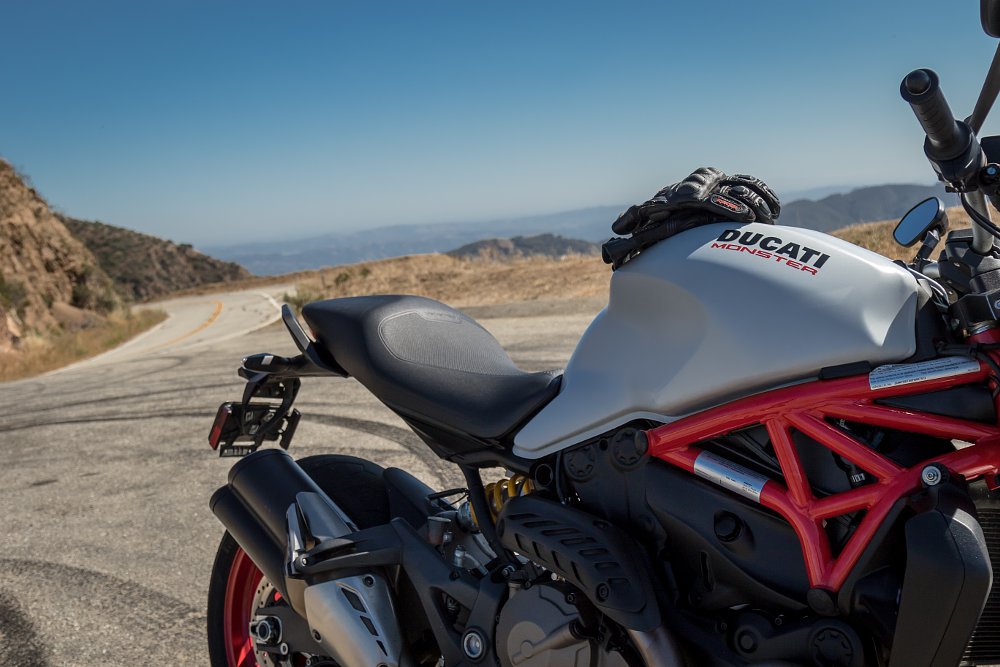
Other than that, my complaints are few and far between. I wish they'd kept a slightly more round headlight or a more classic looking tank, but I suppose that's what the Scrambler is going to become for Ducati. I can see why the aesthetics get in the way for Ducatisti, but I still find it one of the better looking bikes in the sport-naked category.
The competition
The closest competitor to the Ducati Monster 821 is the MV Agusta Brutale 800 ($13,298). The MV's 798 cc triple makes 15 more horsepower than the Ducati, while producing 8 foot-pounds less torque. The Brutale's suspension is both higher spec and more adjustable and the bike comes in 30 pounds less than the Monster. However, with an almost $1,800 price bump, not many are willing to pay for a brand with a tiny dealer network that's struggled to improve the quality and timeliness of their service (though they're working on it).
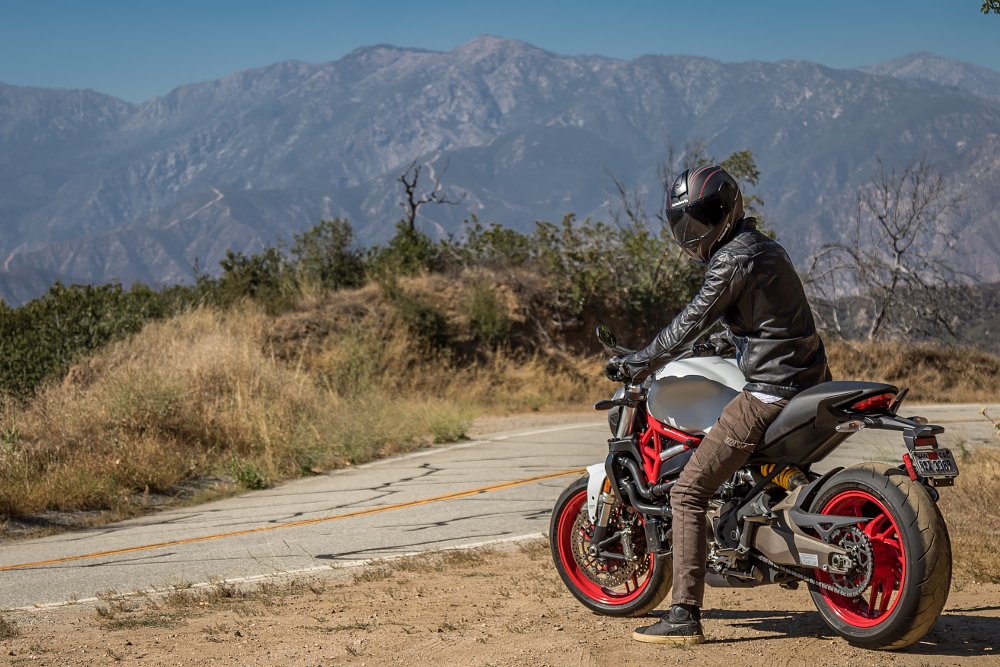
All of the other competitors are drastically different in one way or another. The Yamaha FZ-09's triple makes similar power numbers, but is much less composed and far cheaper ($7,990). The Triumph Street Triple R ($10,399) is a slightly better package in the handling department, with its adjustable suspension and top-notch brakes, but its 675 cc powerplant just leaves you wanting when the two are ridden back to back.
On the larger side, there are bikes like the Honda CB1000R ($11,760), Suzuki GSX-S1000 ($10,499), and Kawasaki Z1000 ($11,999). Personally, I'd take the Monster over all of these because it weighs less, and I like how and where the power is made far more. I could see people disagreeing and preferring Japanese options for their simplicity and ease and cost of service, but the Ducati is fun to ride in a way that those other bikes simply aren't. You could also consider the Suzuki GSX-S750 or upcoming Kawasaki Z800, but I'd have a really difficult time ever feeling great about sacrificing that much just to save two grand. Bikes in this category are about fun, and the Monster simply has that in spades.
Conclusion
The Monster 821 leaves me with a bit of a conundrum. Do I think the Monster is not only an incredible update to a popular bike, but also just a fantastic motorcycle? Absolutely. Am I surprised that they aren't flying out of showrooms like the previous iterations? Not really.
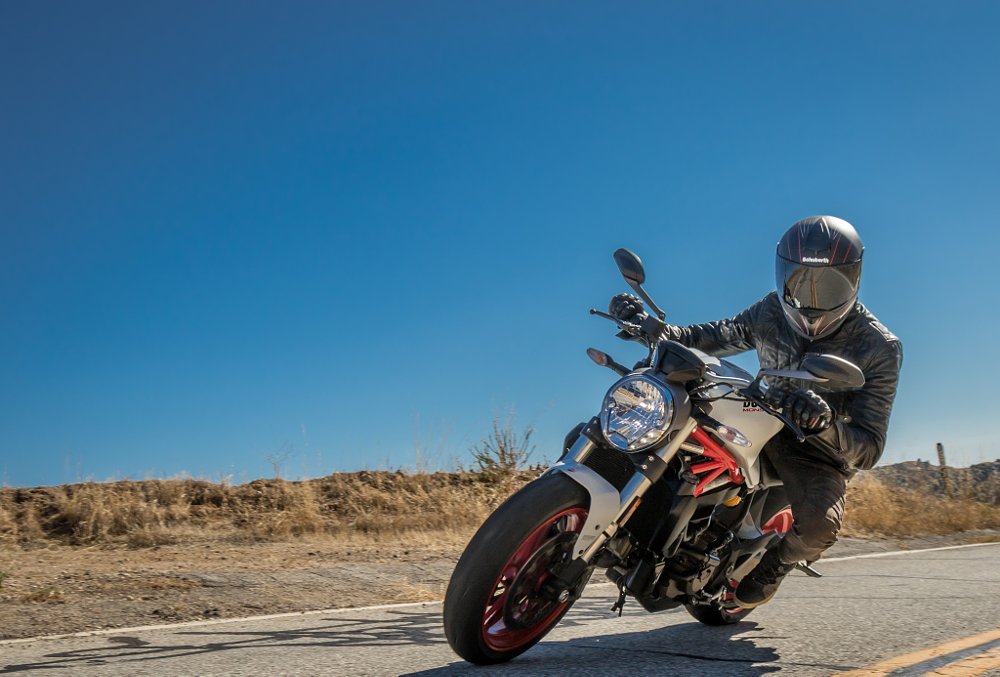
The question of whether a bike is "worth it" or not is an incredibly personal one, depending on a number of factors from income to riding style to aesthetic tastes or mechanical knowledge and ability. While I'm often able to say a bike is "worth it," or the best buy when compared to its competitors, that just isn't the case with bikes like this that carry a higher MSRP, because some things just aren't easily measurable. Some of this bike's worth is tied to the way it makes the rider feel, but I certainly haven't found a way to quantify the feelings inspired by the gorgeous paint or beautiful exhaust note.
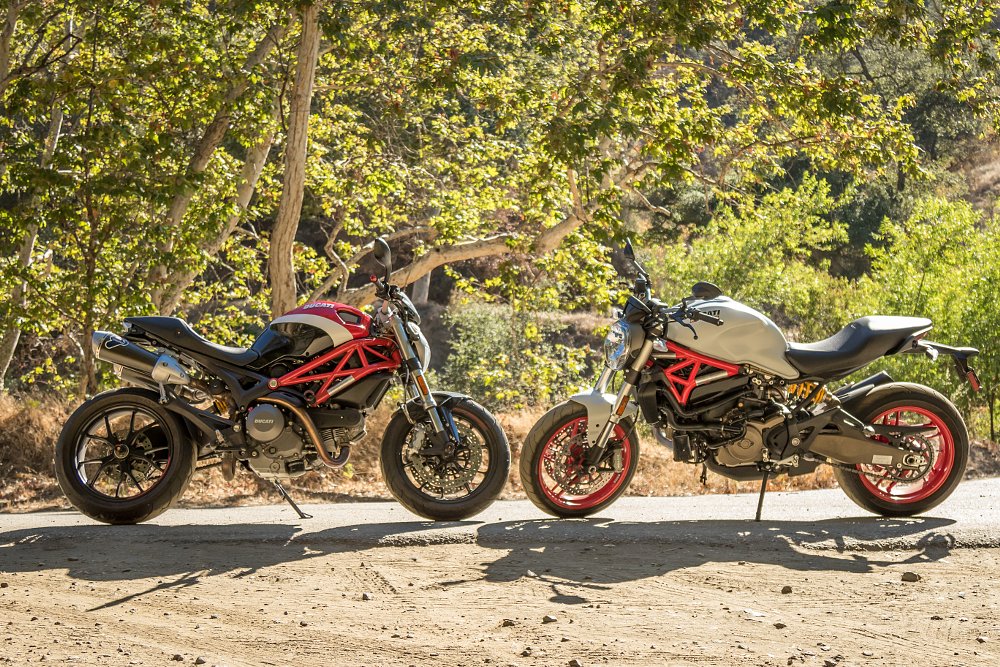
The Ducati Monster 821 is a simply fantastic motorcycle. At $11,495, the bike is actually fairly well priced when you consider its advantages over similarly priced, Japanese liter-bike options. However, it's also a price that will mean it never finds its way onto some people's short lists to begin with. If this thing were ten grand, I would demand you save the extra money and declare this the best bike for all. As it stands, I'll leave it just as a motorcycle I've come to really love and one anyone would be lucky to own.
















